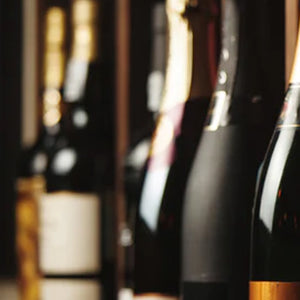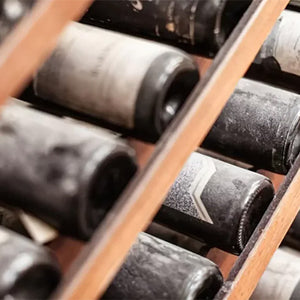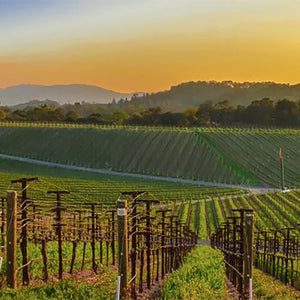
Champagne, Prosecco, Cava – What's the Difference? Everything You Need to Know About Sparkling Wine
The high acidity, fruit-forward nature, and refreshing textures found in sparkling wines make them top picks for sipping year-round – however, not all that glitters is created equal.
Sparkling Wine Quick Facts
- Three main methods: traditional, tank (charmat), and ancestral
- Produced all over the world (49% in France and Italy)
- $44 billion industry in 2022
As much as we love all types of sparkling wine—Champagne, Cava, Prosecco, and beyond—understanding the differences amongst the world’s leading bubbly wine categories is the first step to finding the perfect bottle to fit your needs. Curious to learn more? We’re breaking down everything you need to know about the wine world’s most beloved bubbles here.
Champagne
Champagne really needs no introduction. Deemed the unofficial king of sparkling wine, these highly sought after bubbles are produced in their eponymous region of northern France. Crafted mostly from Chardonnay, Pinot Noir, and / or Pinot Meunier, these luxurious bubbles are some of the most sought-after sparkling wines on the market. Contrary to Prosecco, Champagne is produced via the méthode traditionelle (otherwise known as the méthode champenoise), meaning that secondary fermentation takes place in bottle. Wines from Champagne are also required to age for a minimum of 12 months on the lees prior to release, though many are aged for much longer.
Within the Champagne region, two major styles of producers exist: houses and growers. Houses—think Moët, Veuve Clicquot, and more— produce a large number of bottles per year from estate-grown and purchased fruit. Growers, on the other hand, tend to produce much smaller quantities of wine and use only estate-grown fruit.
Prosecco
In terms of volume, Italy is responsible for making more sparkling wine per year than any other country (around 27% of the world’s total production). The majority of said 27% percent is Prosecco. Produced in the northeastern part of the country from the Glera grape, these youthful, easy-drinking bubbles generally cost a lot less than their Champenoise counterparts, though tend to be less complex in style. Rather than using the traditional method, Prosecco is crafted via the tank (Charmat) method, meaning that secondary fermentation takes place in large pressurized tanks. The wines are also generally released with minimal age on them, rendering them ideal for casual, easy-drinking consumption.
Cava
For the best Spanish sparkles in the biz, look no further than Cava. Produced in the Catalonia region of Spain, these unique bubbles are crafted via the traditional method—that is, the same process used to make Champagne—though from the local varieties of Xarel-lo, Macabeo, and Parellada. We tend to think of these wines as the sweet spot between Prosecco and Champagne – they’re not exactly alike to either category, but in terms of taste, quality, and price ratio, their happy-medium solution is always just right. Best of all, the DO of Cava (that is, the regional board that creates the standards and regulations for the wine) has officially decided that as of 2025, all wines bearing the Cava name must be completely organic.
Crémant
The category of crémant bubbles is quite vast, as this overarching term is simply used to designate French bubbles that are vinified using the traditional method / produced in the same way as Champagne, though grape varieties and aging requirements are flexible. Crémant is produced in nearly very wine-producing region in France, though the most popular tend to be Crémant d’Alsace, Crémant du Jura, Crémant de Bourgogne, and Crémant de Loire.
Sekt
Like France, Italy, and Spain, Germany also has its own designation for sparkling wine – enter Sekt, one of the bubbly world’s best-kept secrets. Similar to crémant, Sekt is a rather flexible term. Wines designated as Sekt can be produced via the traditional method (Champagne) or tank method (Prosecco), and while the classic Champagne grapes of Chardonnay, Pinot Noir, and Pinot Meunier are permitted, so are locally common grapes Riesling, Pinot Blanc, Sylvaner, and more. Sekt is also produced all over the dryness-sweetness spectrum, rendering these bubbles true Jacks of all trades.
Other Types of Sparkling Wine
While the above five categories are some of the most popular, a plethora of other bubbles are just waiting to be discovered. For traditional method sparklers made in Italy’s Lombardy region, look to the wines of Franciacorta. For fresh, fizzy, and (generally) low-ABV bubbly, check out pét-nat wines, which are produced via the méthode ancestrale (one fermentation that finishes in bottle). For traditional method bubbles from the south of France, look to Blanquette or Crémant wines from Limoux… and for domestically-produced bubbles, seek out some American-made wines crafted right in our very own backyard.




